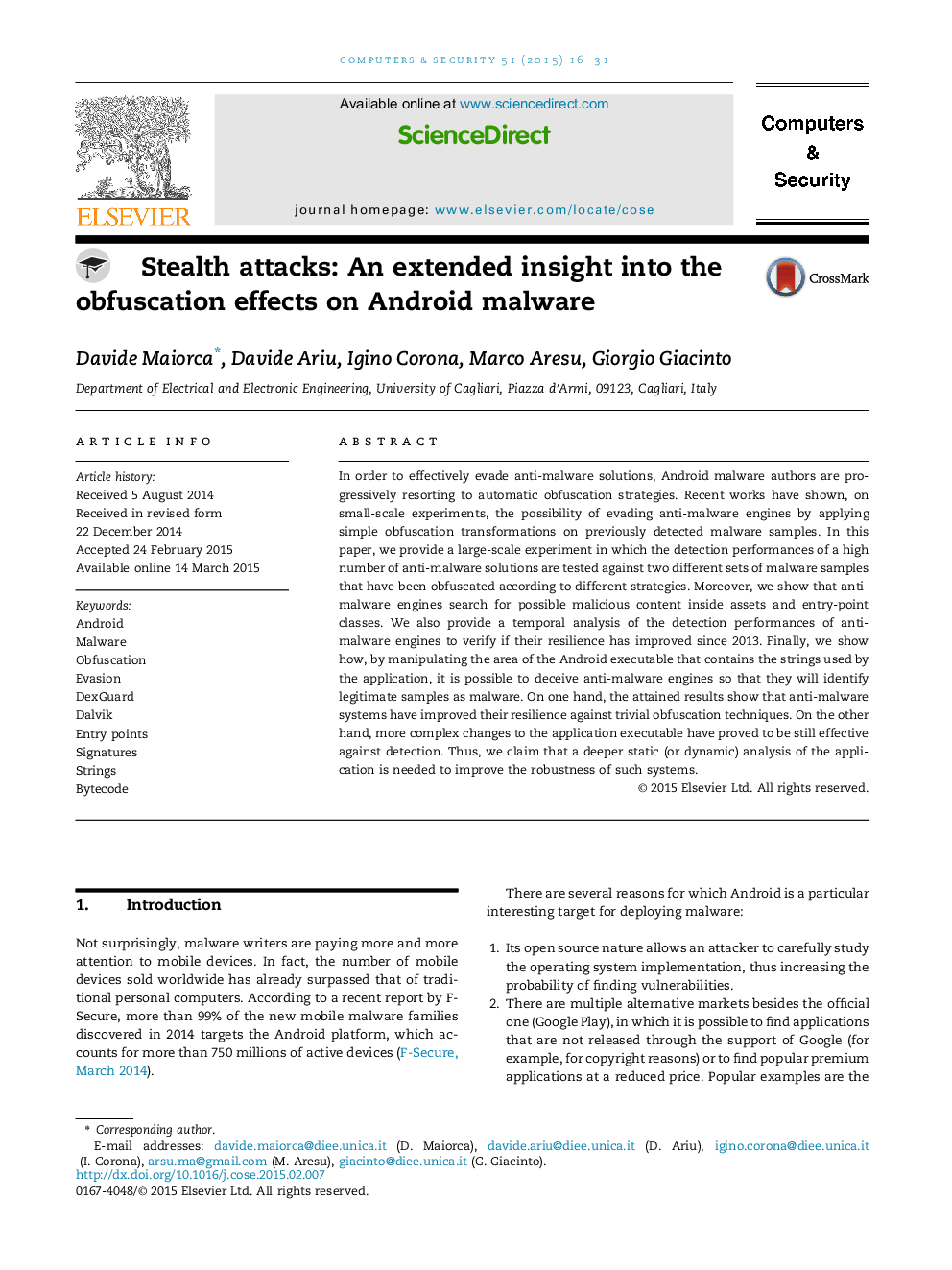| Article ID | Journal | Published Year | Pages | File Type |
|---|---|---|---|---|
| 454726 | Computers & Security | 2015 | 16 Pages |
In order to effectively evade anti-malware solutions, Android malware authors are progressively resorting to automatic obfuscation strategies. Recent works have shown, on small-scale experiments, the possibility of evading anti-malware engines by applying simple obfuscation transformations on previously detected malware samples. In this paper, we provide a large-scale experiment in which the detection performances of a high number of anti-malware solutions are tested against two different sets of malware samples that have been obfuscated according to different strategies. Moreover, we show that anti-malware engines search for possible malicious content inside assets and entry-point classes. We also provide a temporal analysis of the detection performances of anti-malware engines to verify if their resilience has improved since 2013. Finally, we show how, by manipulating the area of the Android executable that contains the strings used by the application, it is possible to deceive anti-malware engines so that they will identify legitimate samples as malware. On one hand, the attained results show that anti-malware systems have improved their resilience against trivial obfuscation techniques. On the other hand, more complex changes to the application executable have proved to be still effective against detection. Thus, we claim that a deeper static (or dynamic) analysis of the application is needed to improve the robustness of such systems.
